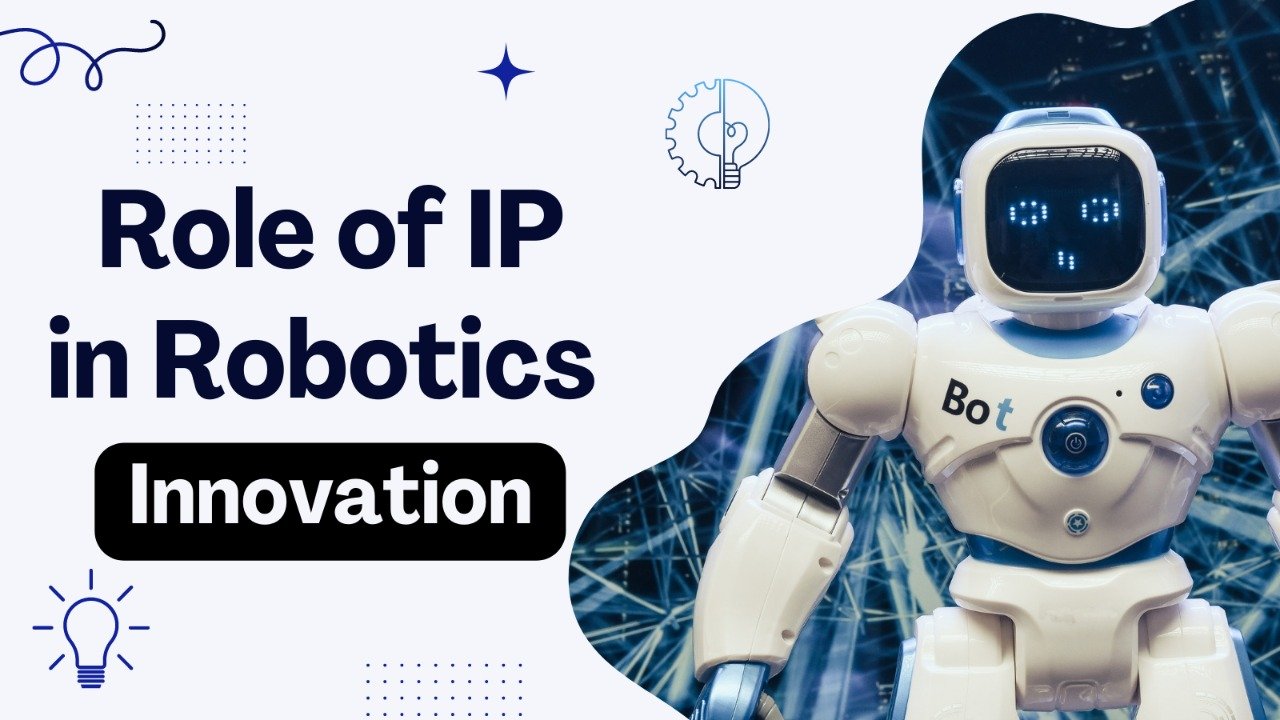ROLE OF IP IN ROBOTICS INNOVATION

ABSTRACT
In today’s globalized world we can’t handle any work without the help of technology because when we do any act there is the use of some technology as we all know that the scientists, scholars, etc. Are working on the enhancement of the new technology or developing the new technology day to day. Recently in some studies scientists and people are analyzing how we can develop robotics. This paper analyzes the gap of how innovation takes part in robotics and how it can be diffused and how the IP plays the role in the whole process. This paper contains and tells the only robotics clusters are located in the U.S., Europe, only but they spread slowly in the Republic of Korea and China also. The robotics innovation ecosystem is developed by the use of cooperative networks, individuals, research institutions, and with firms. The Government of India supports robotics innovation through funding, military demand and by following national robotics strategies. The competition which is held and the prizes are distributed plays an important role as an incentive in innovation. In IPR patents are used for the exclusion of the third party and for the enjoyment of the freedom and security and also for operating it safely without any competitors. Licensing provided to the technology can end the chance of the litigation(case). Automotive and Electronics company's filed the highest patent file but now some new actors also emerge in such as medical technology and the internet. Copyright protection is relevant for robotics, mainly for the protection of the software which is used in the development of the new technology. And recently those that are patented are known as the ‘Netlists’. This paper tells you about how the IP protects and plays a role in robotics innovation.
INTRODUCTION
In today’s world the spreading and development of technology like AI (Artificial Intelligence) and robots and their consequences are arising as the topics of the debates. Recently the human made robots are kept on trial in the supermarkets, schools, hospitals and retirement homes which are established in Europe, U.S., and also in China. Mostly the Lawyers, Advocates, Technologists, and others raised the questions on the use of their potential. In the economic circles they focus on the positive and negative potential of the robot and on the employment impacts of the robots. In this widespread area after giving the attention on the center of the points there are some studies of robotics innovation and underlying these in the innovation ecosystem. After that they compare this with the IP. There are some ancient writings of the 1990s existing in the new innovation generals of the robotics innovation. The role of this paper is to fill the gap by providing up-to-date information related to the robotics innovation system and the role of IP.
DEVELOPMENT AND ECONOMIC IMPORTANCE OF ROBOTS
Robotics is the field which diverts the technology in the development of the robots or for the application which diversifies the areas such as car factories, construction sites, schools, hospitals, private homes, etc. The use of industrial robot arms in the industrial automation for the automotive and others manufacturing businesses which are bigger than the three or four decades. But many existing research areas like AI and sensing are combined by which in recent years autonomous products are called ‘advanced’ robots, in which the widespread potential were seen in the economy and society.
ROBOT
Any machine which operates automatically and replaces human efforts is called a robot. Robot considered as an actuated mechanism program which moves the autonomy degree with the two are more than two axes in the environment for completing their work. Many scholars and scientists believe that any machine who is capable of sensing on its own and has capability in reacting according to the environment and works on the base of the environment and also has the capacity to take independent decisions on its own. The term autonomy was used to mark the difference between the robots and their other machines. Robots are different because they have the ability to interpret the environment and adjust their actions according to the environment, and achieve their goals.
HISTORY OF ROBOTICS
Robots are not the new basic forms. It is the history that started from the ancient Greek with the automatons. Essentially which are non-electric moving machines and these are displayed in the moving objects. Simple automatons are invented continuously but the robots are evolved by his/her continuous forms with the industrialization process, and perform repetitive tasks. The recent history of invention of industrial robots stands in two key areas. The first one is in the incarnation of robots, which is industrial automation. The first robot was controlled with the help of a control system which was controlled by humans or computers by maintaining distance. Second one is the mechanical manipulation systems, as robotic arms or legs are moved or grab the objects through the robots. For mechanical manipulation the first industrial robot was developed in 1973, which was in the form of a small crane. The W.G. Walter developed the robotics arms and legs which made the first autonomous robot in the year 1940s. George Devol firstly invented and filed the application for patented the automatically operated programmable robotic arm in mid of the 1950s. After that, Geroge Devol made a partnership with Joseph Engelberger and worked together. After that the many scholars named him as a “Father of Robotics”, and he called with that name also. Then he created one of the company’s which is known by the name of ‘Unimation’, and later this company started producing robots in 1956. This company started the commercialization of robots.
The first computer controlled revolute electric arm was developed in the case institute of technology, western reserve university, U.S. In 1969 the researchers invented the Universal manipulation arm which allows more sophisticated control in the assembly and automation.
ROLE OF INTELLECTUAL PROPERTY
The robotics innovation focus is shifted day by day towards the more advanced robotics involving different technology fields such as the actors and economic sectors. When we study IP and strategy for the good returns on innovation and investment are fetuses and our understanding is incomplete. To understand this concept, we need to study the large industry of the variety of the robots which are the products for filling the patents for this process because no one fits in all. In IP the patent is the most important element for the robotics companies because capital is highly required for the process of development and research. Before this the company can take the patent on the process of his own before manufacturing or starting the product. For the discovery, inventions by the engineer, scientists or other legal persons who are working on the new inventions or discovering the new things can have the right for filing the patent and the patent is typically favored for the trade secrets. Many robotics companies can use the highly sophisticated software in their robot while enabling robotics as a hardware device by which the other companies or engineers cannot easily reverse this technology because the chances of the competition will end in the market. There are some competitors frequently considering the robotics startups but also there are some persons who are seeking protection by the process of patent and receiving the advantages for the startups.
CONCLUSION
The IP plays a role for the protection of the rights and provides the incentive to the authors and also to the inventors, means who produced something and want the protection for their work. In the Robotics and innovation the IP plays their role by patenting the process of the manufacturing to the companies because in the manufacturing of the robots a huge amount of money is required and for managing the money, they need some time and someone not take and manufacture the robots by using someone’s process so, the patent provides the right to them for protecting their process. And also, patents protect the secrecy and technology of the inventors. By protecting the process, they become first brands in the market and earn huge profit and build high reputation. The copyright is also a good process for protecting several aspects of robotics, innovation such as computer code, code language, etc.
Author: Aman Shakya













